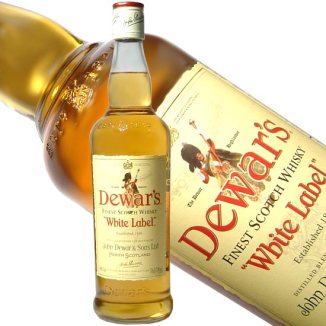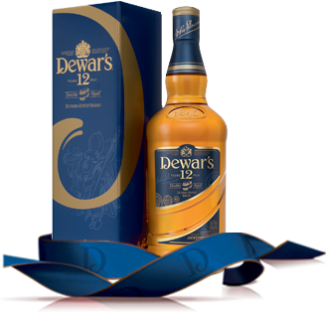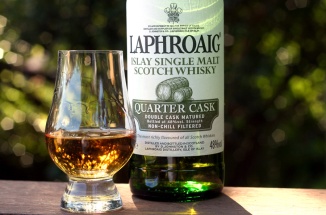 INITIALLY LAUNCHED in 1879, Black Bottle is no newcomer to the blended scotch scene, yet the past decade has brought it two new looks. The first was a buyout by Burn Stewart Distillers in 2003. The second and more substantial change was effected last year: a total repackaging of the bottle and a revamp of its recipe, both purportedly harking back to the look and flavor of Black Bottle as it existed pre-WWI. On such an occasion it seems meet to have one last round of the new-now-old recipe (as denoted by its longer-necked green bottle) before toasting its old-now-new successor. Or is that prede-successor?
INITIALLY LAUNCHED in 1879, Black Bottle is no newcomer to the blended scotch scene, yet the past decade has brought it two new looks. The first was a buyout by Burn Stewart Distillers in 2003. The second and more substantial change was effected last year: a total repackaging of the bottle and a revamp of its recipe, both purportedly harking back to the look and flavor of Black Bottle as it existed pre-WWI. On such an occasion it seems meet to have one last round of the new-now-old recipe (as denoted by its longer-necked green bottle) before toasting its old-now-new successor. Or is that prede-successor?
A medium -light amber in the glass, Black Bottle’s bouquet are immediately indicative of its core provenance—Islay. Smoky, peated, dashed with some permanent marker, Black Bottle is rather more startling than a stereotypical budget blend and almost entirely in a good way. With some oxygen (or a dollop of water) it will smooth out with time, unfurling honeyed grains, slightly crisp almost like wheat, and lighter, mostly tart fruits like green apple. More enduring and memorable than any single aroma, though, is a warming aura that fills the nose and begins to creep down the back of the throat. This sensation transfers over entirely to the flavor, which is considerably softer than its initial aromas despite some initial spark, slight peppery crackle, and hint of char. Then, as with the aroma, the subtler second side is revealed—butterscotch, a little vanilla, and chloride-rich water for a slightly softened mouthfeel. The finish is of medium length and fairly well warming.
Islay is arguably the hardest Scotch profile for a blend to capture well, but Black Bottle makes a wholly admirable try. Although it does not quite deliver on its robust early promise, overall it boasts an array of articulate flavors and virtually none of the cheap whisky corruptions. Indeed, even more notable than its taste is its value; at around $18 it counts as a superior bargain for any kind of blend.
Rating: 85








